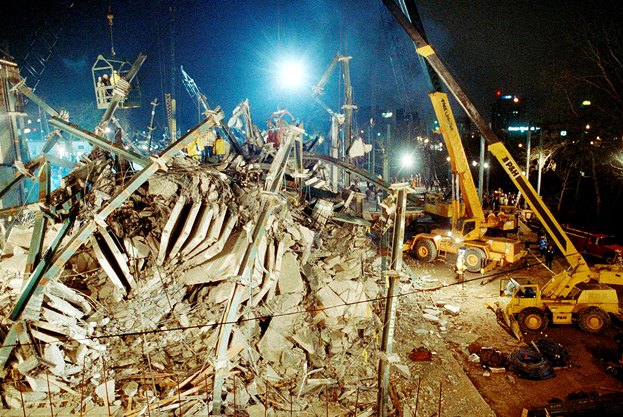Reproduced in full with the kind permission of the author: Jordan Barab – the article appeared first on 20 April 2022 in his excellent newsletter Confined Space

April 28 is Workers Memorial Day — a day dedicated to memorializing those killed on the job and rededicating ourselves to fighting for the living. April 28 was picked because it’s the anniversary of the Occupational Safety and Health Administration. And coincidentally, April is an especially tragic time to remember some of the most serious workplace tragedies in American — and world — history.
Upper Big Branch Mine Disaster, Raleigh County, WV, April 5, 2010: An explosion at the Upper Big Branch mine killed 29 miners. The Mine Safety and Health Administration concluded that flagrant safety violations contributed to the explosion. It issued 369 citations at that time, assessing $10.8 million in penalties
Ammonium Nitrate Explosion, Texas City, TX, April 16, 1947: A fire on the French-registered vessel SS Grandcamp detonated her cargo of about 2,300 tons of ammonium nitrate. This started a chain reaction of fires and explosions in other ships and nearby oil-storage facilities, ultimately killing at least 581 people, including all but one member of the Texas City fire department. It was the deadliest industrial accident in U.S. history and one of history’s largest non-nuclear explosions.
West Fertilizer Explosion, West, TX, April 17, 2013: An ammonium nitrate explosion occurred at the West Fertilizer Company storage and distribution facility in West, Texas. Fifteen people were killed, including 12 firefighters, more than 160 were injured, and more than 150 buildings were damaged or destroyed.
Deepwater Horizon Explosion, April 20, 2012: A fire and explosion on the Deepwater Horizon drilling rig killed 11 workers and resulted in the largest marine oil spill and environmental disaster in history.
L’Ambiance Plaza Collapse, Bridgeport, CT, April 23, 1987: The L’Ambiance Plaza apartment building collapsed due to a faulty lift slab construction technique while under construction, killing 28 construction workers.
Rana Plaza Factor Collapse, Bangladesh, April 24, 2013: The eight-story Rana Plaza factory building collapsed, killing 1134 people. The shops and the bank on the lower floors were immediately closed after cracks were discovered in the building the day before the collapse. But the building’s owners ignored warnings ordering garment workers to return the following day and the building collapsed during the morning rush-hour.
Chernobyl Nuclear Power Plant Disaster, Ukraine, USSR April 26, 1986: No. 4 reactor in the Chernobyl Nuclear Power Plant exploded during a safety test It was the worst nuclear disaster in history. Dozens of operators and response workers died due to massive radiation exposure and hundreds more from the nuclear fallout.
Willow Island Collapse, Willow Island, WV, April 27, 1978: A cooling tower under construction at the Pleasants Power Station at Willow Island, West Virginia, collapsed, killing 51 construction workers. It was the deadliest construction accident in U.S. history